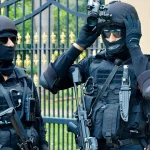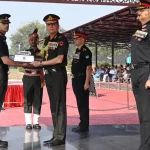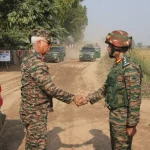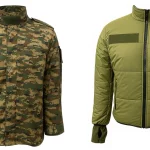The elite Para Commandos of India, part of the Indian Army’s Special Forces, are renowned for their rigorous training, exceptional skills, and operations in some of the most challenging environments. With their capability to perform high-risk missions, including counter-terrorism, direct action, and hostage rescue, the Para Commandos represent the pinnacle of military excellence. Integral to their identity are a series of specialized badges that symbolize their achievements, qualifications, and honours earned through formidable training and remarkable accomplishments. These badges are not merely decorative; they carry significant meaning, reflecting both individual commitment and unit pride and serving as visible emblems of the challenges surmounted in service to the country.
Historical Context
The Para Commandos’ roots can be traced back to the establishment of the Indian Army Parachute Regiment in 1945. The formation of this elite force marked a significant development in the Indian Defence landscape, introducing highly specialized airborne operations during World War II. As global military strategies evolved, so did the need for swift, mobile, and specialized forces capable of unconventional warfare. The Para Commandos were formally established in 1966, focusing on counter-insurgency and special operations. Over the years, their operational success and the valorous acts of individual commandos in various conflicts, such as the Kargil War and insurgency operations, have solidified their reputation as one of the world’s foremost Special Forces.
The Importance of Badges in the Para Commandos
Badges earned by Para Commandos serve as a testament to individual prowess and signify the collective ethos of the unit. Each badge represents a specific skill set, operational role, or honour achieved during demanding training or combat scenarios. They not only differentiate members of the Para Special Forces from conventional troops but also instill a sense of pride and motivation within these soldiers. The pursuit of these badges exemplifies the rigorous nature of their training regimen and underscores the high standards maintained within the Para Commandos.
Key Badges Earned by Indian Para Commandos
1. Balidaan Badge
The Balidaan Badge embodies the core ethos of bravery and sacrifice. Symbolizing self-sacrifice for the motherland, this badge is exclusively awarded to personnel of the Para Special Forces who demonstrate extraordinary commitment.
- It represents a soldier’s willingness to lay down their life for their country, a sentiment deeply embedded in the military culture.
- The badge is awarded to a select few; statistics indicate that only 4-5 out of every 100 volunteers successfully earn it, marking its rarity and significance.
- In addition, the Balidaan Badge is also awarded posthumously for the first confirmed kill, emphasizing its dual recognition of valor and sacrifice.
- Visually, it features a commando dagger pointing downwards, flanked by wings with “Balidaan” written in Devanagari script, worn below the right pocket.
2. Anti-Tank Guided Missile (ATGM) Badge
The ATGM Badge indicates proficiency in handling sophisticated weaponry.
- It is awarded upon successful completion of the Anti-Tank Guided Missile course, highlighting skills in defeating armored threats.
- Commandos must showcase their ability to hit targets during rigorous battalion support weapon training to qualify for this badge.
- This badge underscores the diverse operational capabilities of the Para Commandos, particularly in ground combat scenarios, and is worn above the name tag.
3. Special Forces Badge (Shoulder Title)
The Special Forces Badge is a hallmark of successful probation in the Para SF.
- It is donned by personnel on the upper right and left sleeves and distinguishes members of the elite force from other military units.
- The shoulder title, characterized by its maroon background with “SPECIAL FORCES” in light blue, has been in use since 2006, replacing the previous “COMMANDO” tab.
- This badge underscores the extensive training and operational readiness expected from Para SF personnel.
4. Combat Free-Fall Badge
The Combat Free-Fall Badge represents a commander’s airborne acumen.
- Awarded after completing a demanding Combat Free-Fall course that involves a minimum of 50 jumps from high altitudes (up to 33,500 feet).
- The course includes both HALO and HAHO jumps, showcasing advanced insertion techniques.
- Worn above medals and ribbons, this badge signifies elite proficiency in airborne operations, crucial for stealthy infiltrations in combat.
5. Para Wings (Jump Wings)
The Para Wings signify basic parachute qualification.
- Commandos earn this badge after successfully completing the Parachute Basic Course, a fundamental requirement for airborne operations.
- It features an emblematic white parachute with light blue wings, worn above the right chest pocket.
- The wings symbolize readiness for rapid deployment, marking a comrade’s journey from a standard soldier to a member of the airborne elite.
6. Regimental Badge
The Regimental Badge holds a prestigious place within the Parachute Regiment.
- This unique badge features an open parachute partially enclosed in a circle, with the words “PARACHUTE” and “REGIMENT” inscribed.
- The badge incorporates wings extending from the circle and a dagger overlaid, representing both regimental affiliation and historical significance within the Army.
7. Jump Indicator Badge
The Jump Indicator Badge quantifies a commando’s parachuting experience.
- A brass emblem showing a parachute with wings, it indicates the number of successful jumps completed by the commando.
- Additional stars or symbols denote greater achievements and advanced levels of parachuting proficiency, showcasing the individual’s airborne capabilities.
8. Diving Badge
The Diving Badge symbolizes underwater operational skills.
- Commandos who qualify in combat diving earn this badge, which is vital for missions involving sea-based infiltrations and extractions.
- The customized badge reflects the specialization required for underwater operations, an essential aspect of modern warfare.
9. Commendation Badge
The Commendation Badge is awarded for extraordinary acts beyond regular duties.
- This recognition can be for bravery, exceptional service, or outstanding achievements in the line of duty, emphasizing the high standards upheld within the force.
- Criteria and design may vary based on the awarding authority, representing individual dedication to excellence.
10. Tiger Hill Badge
The Tiger Hill Badge commemorates significant achievements during the Kargil War in 1999.
- Awarded to the Para Commandos who played key roles in capturing Tiger Hill, this badge embodies the valor displayed in one of the most challenging military operations in recent history.
- This badge holds symbolic meaning for the unit, connecting it to a defining moment in Indian military history.
11. Chakrata Badge
The Chakrata Badge signifies service with the Special Frontier Force.
- Rarely earned, this badge features a winged square with a dagger and lightning, representing operations conducted with this special unit following the 1962 Sino-Indian War.
- It reflects the rich history and affiliation with specialized warfare tasked with covert operations.
12. Foreign Badges
Para Commandos may also earn foreign badges, indicative of their international training collaborations.
- Badges such as the US Army Parachutist Badge and the Pathfinder Badge not only testify to their skills but also reflect global standards in military training and operations.
- Earning foreign badges illustrates the commitment to learning from best practices worldwide, enhancing their operational capacity.
Case Studies: Real-World Applications
The accomplishments and valor of the Para Commandos have been spotlighted in various critical operations. One poignant example is their participation in the Kargil War in 1999, where they played an integral role in high-altitude warfare.
During this conflict, the capture of Tiger Hill was a tactical turning point, demonstrating the Para Commandos’ niche capabilities in challenging terrains, which aligned closely with the skills symbolized by their badges. The successful operation not only relied on their tactical proficiency but also showcased their exemplary bravery, culminating in numerous awards and badges, reinforcing the operational ethos that these honours embody.
Another notable instance is the 2016 Uri attack response, where Para SF commandos executed surgical strikes across the Line of Control. Their mission was a contemporary testament to their extensive training, command, and tactical superiority. The proficiency represented by their badges—especially those like the Balidaan and Combat Free-Fall Badges—exemplified the high-stakes nature of their operations.
Statistical Data and Research Insights
The Para Commandos are often regarded as one of the most elite forces globally. With only a 1% eligibility of recruits eventually serving in these specialized roles, the training and operational success rates speak volumes about their efficiency.
- Only 4-5% of applicants earn the Balidaan Badge, highlighting the extreme selection process and the rigorous testing that ensures only the most dedicated and capable personnel are chosen for the Para SF.
- The operational readiness demonstrated through various badges also connects to broader military success metrics; for instance, trained commandos significantly contribute to the success rates of counter-terrorism operations.
Challenges and Solutions in the Training Regimen
The road to earning these badges is fraught with challenges. The selection and training process for the Para Commandos is incredibly demanding, both physically and mentally. Candidates face:
- High Attrition Rates: With about 70% of volunteers dropping out during the initial selection phase, maintaining morale and a positive training environment is imperative.
- Psychological Stress: The high-stakes nature of their roles necessitates robust mental conditioning to cope with the realities of operational warfare.
Proposed Solutions
- Enhanced Psychological Preparation: Providing psychological resilience training can help candidates cope with the demands of undergoing intense training and the nature of special operations.
- Support Systems: Establishing peer support mechanisms can foster cohesion among candidates, promoting perseverance through tough training phases.
Future Trends and Predictions
As geopolitical conditions evolve, the nature of warfare is continually transforming. With increasing emphasis on asymmetric warfare and counter-terrorism operations, the role of elite forces like the Para Commandos will expand further. The following trends may be anticipated:
- Expansion of Training Paradigms: Advances in technology will lead to the incorporation of drones and cyber capabilities into training programs, enhancing operational effectiveness.
- International Collaborations: Increased joint exercises and training exchanges with foreign special forces could provide new techniques and methodologies, reflecting in badge qualifications and overall operational capabilities.
Conclusion
The badges earned by the Para Commandos are not just symbols; they are emblems of bravery, sacrifice, and exceptional skill. As the landscape of military engagement continues to evolve, these badges will remain vital identifiers of the dedication and discipline inherent in the Para Special Forces. Such accolades promote a culture of excellence and serve as powerful motivators for aspiring commandos, compelling them to strive for the honour represented by each badge they aim to earn.
The journey of a Para Commando is a testament to the tenacity of the human spirit and the unyielding quest for excellence. As they continue to protect and serve their nation, the badges worn by these elite warriors will forever symbolize their unwavering commitment and valor in the face of adversity.












